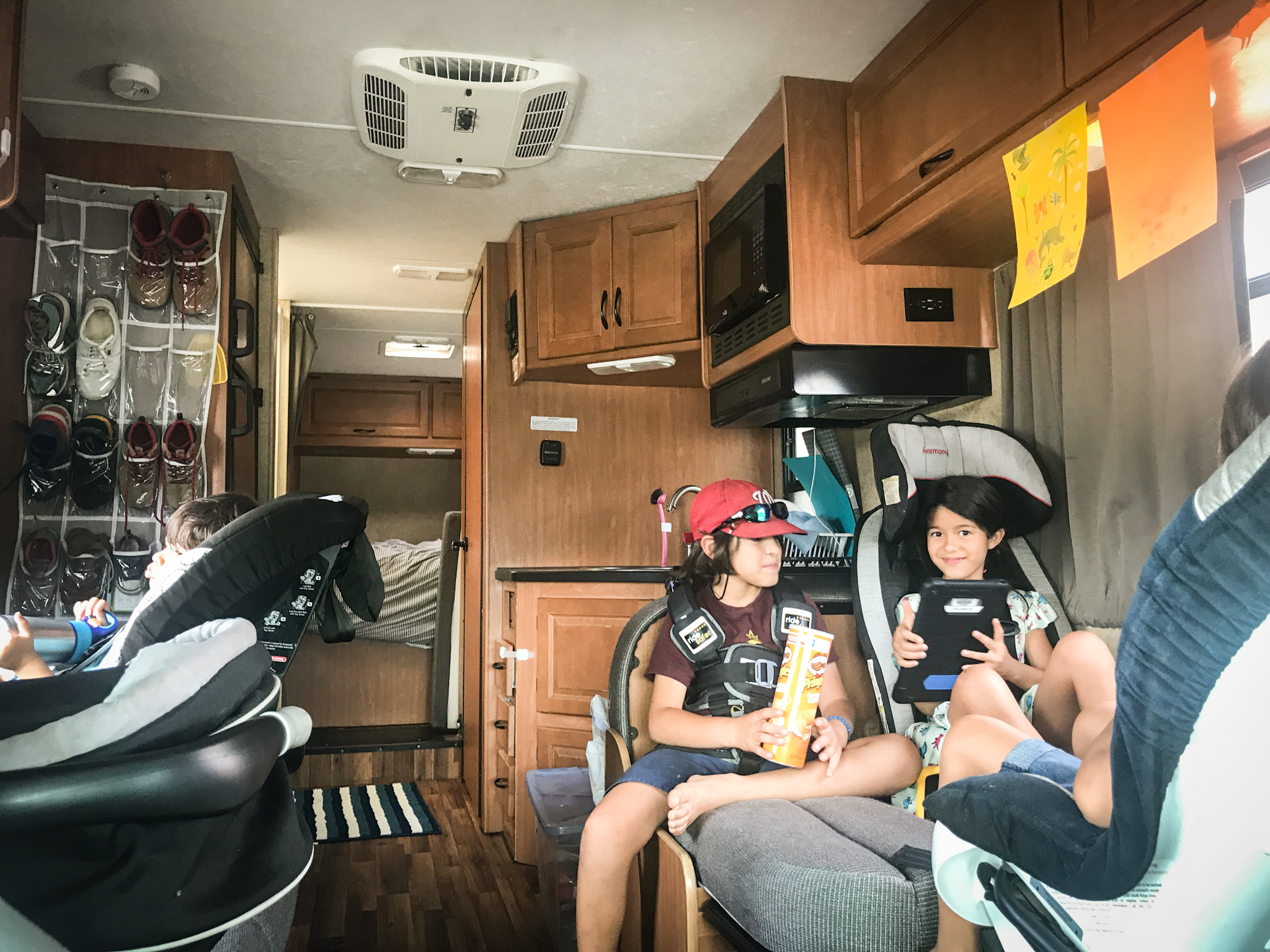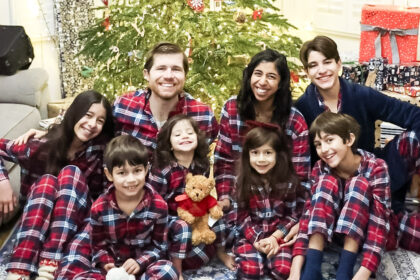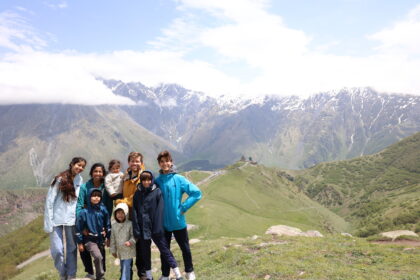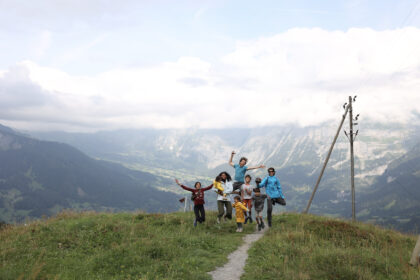As I wrote previously, both my husband’s parents and my parents live across the country from us. We really wanted to spend some extra time with them, since multiple of them have serious health considerations and also cannot travel during the current pandemic. So we started looking into RVing as an option, but were really concerned about the safety of car seats in RVs.
So we started doing some digging to see if we could find a solution that was, first and foremost, SAFE. It goes without saying that we love our kids and do not want to put them at risk. We tend to be pretty conservative with car seat usage in our daily lives. We extended rear face our children (until 3.5/4), and keep our children harnessed until they outgrow their seat’s limit. Of course, we wanted to maintain that same level of protection in an RV.
Info On Car Seats in RVs
Below, I’ve detailed the following:
- our minimum requirements for our particular RV,
- general RVing with kids safety information we gathered from our research and from multiple child passenger safety technicians (CPSTs), and
- safety info specific to car seats in RVs.
Please keep in mind that this is NOT professional safety advice. The Manufacturers Alliance for Child Passenger Safety (MACPS) stated that it recommends that families “choose a non-motorized tow-able RV, so that children can be restrained properly in the passenger vehicle that is towing the RV.” (You can read the entire statement here.)
However, based on our particular RV configuration and the safety precautions we put in place, as well as discussion with and support of three separate child passenger safety technicians, we felt we could safely proceed. I always find it helpful hearing what real families have done with a measured and practical, real-life analysis. I hope it helps you, too!
Our RV Requirements for Installing Car Seats in RVs
Every RV and RV manufacturer varies a bit as far as specs and features. As we were purchasing a used RV, we were able to find out the features for that specific vehicle, rather than just the general info for the model. Here were our minimum requirements for any used RV purchase:
- Pull test – we needed all forward facing seats to be pull tested to ensure they could manage the load on the belt.
- All seat belts anchored to metal, not just to the wood floor. If the belts are anchored to wood, they may not be structurally sound and may not bear load in the event of a crash.
- Locking lap belts in every seat.
- No slide outs, as they make the entire vehicle less structurally sound in the event of a crash.
- Preferably at least a couple of anchor points for forward-facing car seats.
We did some digging and discussed with both the seller (the Cruise America folks, who had also managed the vehicle for the last 4 years), as well as with the manufacturer directly (Thor). Both confirmed that our RV met all of these requirements, including having anchor points on the two forward-facing seats in the back.
We also learned that all of the seats were installed exactly the same, even if the rear- and side-facing seats weren’t pull tested. Of course, the impact differs on a side or rear-facing seat, but it at least gave us some idea of the seats that were installed.
RV Safety with Kids: Our Precautions to RV with Kids
When I started my conversations with the CPSTs, I was pretty unsure about whether taking an RV with car seats would work and be safe. Because of this, I told them right away that they should tell me if they thought we should just avoid putting car seats in an RV altogether. I was 100% open to that feedback. However, none of them thought it was unsafe or that we should avoid going. Because of this, I felt confident in proceeding.
General RV Safety Info From CPSTs
The various CPSTs brought up the following points:
- We’re starting at a baseline of concern for our kids just by demonstrating interest and commitment to safety.
- One of the CPSTs, who is a former EMT, noted that most accidents can be avoided through defensive driving.
- RVs are some of the biggest vehicles on the road, so it’s more likely that others will see us, and is also safer in the event of a crash.
- RVs statistically have a much lower rate of being involved in a crash than a passenger vehicle.
- Federal standard seat and belt testing is incredibly important. They do, however, only show the testing, not necessarily what is safe. The manufacturer had installed the other, identical seats in the exact same way as the pull tested seats. This made us feel more comfortable with those.
Personal RV Safety Rules
To feel more comfortable and confident, we also formed a few rules for ourselves regarding safely RVing with car seats:
- Never drive over 65 miles per hour.
- Avoid driving at night as much as possible.
- Avoid city driving when possible, as it tends to lend itself to far more accidents than highway driving.
- And, of course, always have every person buckled into their respective seats while the vehicle is moving.
- Every child should use the child most protective/conservative child restraint for their weight and height.
- Never place any heavy items in top cabinets, which could come open during movement. Also, place nothing at all in the cabinets above the baby. We also installed baby locks on cabinet doors as an added precaution against them flying open and lightweight things going flying.
- Always have the adults buckled into the two front seats (driver and passenger) with lap and shoulder belts. Lap belts are not sufficient for anyone, including adults. Additionally, an improperly restrained adult in the back could land on a child in the event of a crash.
Safety Info on Installing Car Seats in RVs
The CPSTs also provided some information specific to installing car seats in RVs:
- I’d originally considered putting the two youngest children in the forward-facing seats that had been pull-tested. However, I realized the two forward-facing seats were also the ones that had the anchor points to tether a forward-facing car seat. In discussing with the CPSTs, every one of them recommended putting the two heaviest forward-facing children in these two seats to use the built-in anchor points.
- One CPST pointed out that whenever possible, he suggests putting younger children closer to the middle. This is true in a passenger vehicle or an RV. However, this wasn’t absolutely essential and sometimes there are tradeoffs based on the vehicle configuration/number of children.
- The rear-facing car seats have side-impact protection, and only require a lap belt for installation. Because of this, they recommended putting the two rear-facing children on side-facing seats with a lap-only seat belt.
- The main goal is to keep everyone inside the vehicle.
- The trickiest child restraint was for our 9 year old, who had outgrown a traditional car seat with a 65 lb weight limit. However, he still needed something that could work with a lap-only belt, so a booster wouldn’t work. We needed to find something that had a top tether but was appropriate for his age/weight/height.
- All forward-facing car seats should have a top tether. This is to prevent them from flying forward in the event of a crash.
- All seats needed a snug installation both with the lap belt and a top tether when applicable. To do this, we needed to evaluate the cushion on the seat.
Which Seats & Configuration We Chose for Our Car Seats in an RV
Keep reading here to see which child restraints and seat configuration we normally use in our family vehicle, as well as which car seats in RV we chose!
IF YOU LIKED THIS POST ABOUT CAR SEATS IN RVS, YOU MIGHT LIKE THESE POSTS TOO:
- 4 Kids, 43 Countries, 20 Must Have Travel Essentials
- Best Educational Kid Activity Books
- Traveling with a Car Seat: Tips and Tricks












[…] wrote previously about why we started RVing with kids, and also the safety considerations when putting car seats in RVs. Our research made us feel comfortable that if we could meet those safety requirements and follow […]
[…] our particular class C RV had built in tether points for child safety seats, and everything was mounted to the metal frame (read more about our research here), we felt […]
[…] Here’s how we figured out the car seat situation in our RV with kids! […]
Would you be able to advise me on car seat location for my 2 year old? We just bought a 2006 Mandalay presidio. We have a Nuna Rava convertible car seat. He’s 25 pounds.
Would just love your real life opinion. We have just 1 child and 1 dog. Traveling from Chicago to Tampa for the holidays. Friends of ours say that a lot of time we don’t really need the car seat because he’ll want me sitting next to him. Confused.
Ann
I’m so sorry for the delay!! I’m not a CPST, but I would recommend a rear-facing position if at all possible. He will definitely need to be buckled in the car seat the entire time. Where did you end up installing it?
[…] Especially if you’re traveling with little ones, there are special considerations when buckling in car seats. You’ll want to make sure that your car seats can be safely buckled into your rig, and also that you have the proper seat belts to secure them. There are only certain seats that can accommodate certain child safety seats, and this is often affected by height, weight, and make of the rig. Some child harnesses can’t go in most standard RVs at all, including booster seats (unless you have a lap and shoulder belt available in the rig). Here is some more info on safety considerations when using car seats in RVs. […]
[…] Especially if you’re traveling with little ones, there are special considerations when buckling in car seats. You’ll want to make sure that your car seats can be safely buckled into your rig, and also that you have the proper seat belts to secure them. There are only certain seats that can accommodate certain child safety seats, and this is often affected by height, weight, and make of the rig. Some child harnesses can’t go in most standard RVs at all, including booster seats (unless you have a lap and shoulder belt available in the rig). Here is some more info on safety considerations when using car seats in RVs. […]
[…] Especially if you’re traveling with little ones, there are special considerations when buckling in car seats. You’ll want to make sure that your car seats can be safely buckled into your rig, and also that you have the proper seat belts to secure them. There are only certain seats that can accommodate certain child safety seats, and this is often affected by height, weight, and make of the rig. Some child harnesses can’t go in most standard RVs at all, including booster seats (unless you have a lap and shoulder belt available in the rig). Here is some more info on safety considerations when using car seats in RVs. […]
[…] for how to install forward facing car seats that must be tethered at the top. Here’s a post on safety considerations when RVing with kids, as well as a post with which car seats in an RV that we personally use. This for sure one of the […]
This is a terrible idea. Using your own judgment and going against the advice of experts isn’t something to be proud of. You’re also opening yourself to liability because by publishing it on your website it could be construed as “advice.”
I’d recommend reading in entirety before commenting – I did NOT go against expert advice. In fact, three different CPSTs supported our decision. And I’m also very clear that this is NOT advice, just sharing what we personally did. Feel free to take your non-reading judgment elsewhere.
I’m sorry my comment made you so defensive. Usually, that indicates self-doubt so I do hope that it leads you to reconsider your decision.
I did read the article in full and there are a lot of problems in it and your misrepresentations of RV safety in general. I see you didn’t name the CPSTs, nor provide links to reputable sites that back up your research. I’m sure that is because they don’t exist. In fact, the organization that certifies CPSTs recommends against the advice the ones you claim gave you. That organization is the CSFTL and they specifically state on their website: “Because of the significant safety risk with installing car seats in RVs, CSFTL advocates against RVs for family travel.”
I’ll give you credit for at least stating that the Manufacturers Alliance for Child Passenger Safety (MACPS) advises against it as well. Here’s some additional advice you may want to consider:
– The safety of rear passengers (including children) is uncertain due to variations in meeting Federal Motor Vehicle Safety seat belt requirements and lack of crash testing.
– During a collision, RV furniture such as wooden benches and cabinets almost always breaks apart creating projectiles that can cause injury to passengers. There are plenty of videos of this online.
– The expert organizations (not nameless individuals) say that child safety restraint systems (car seats and booster seats) are NEVER be used in rear-facing or side-facing bench seating in any RV. And, as I mentioned above, and the CSFTL (who certifies the CPSTs) advised against motorized RV travel for children.
Hi Julie! I wasn’t defensive, nor do I doubt our decision in the slightest. We’ve taken every reasonable precaution and I feel very comfortable with that, though understand others may feel differently (which is fine!). I shared this article as a personal experience of balancing a variety of factors. Real world is rarely perfect, and requires nuance in decision making.
I never misrepresented RV safety – it’s very true significant testing has not been conducted, which I clearly state in my post. It’s also true that lack of testing doesn’t inherently indicate lack of safety. It’s incredibly audacious and prideful of you to assume the CPSTs don’t exist; I assure you they do. Why in the world would I share personal names of individuals on my blog without their consent? Also, as 2/3 are local to me, it wouldn’t be useful to the vast majority of people reading this.
Is ours a perfect solution? Certainly not. But a perfect solution doesn’t really exist for a family of our size, and the risks (based on actual traffic safety data) are incredibly slim. They’re not zero. But in a real world with balancing many factors (including trying to visit high-risk grandparents – the original purpose for the RV), we feel safe and comfortable with the precautions we’ve taken. It’s completely fine if you feel differently, and you’re welcome to share your views on your own page.
The organization that certifies CPST’s is Safe Kids Worldwide. From the website https://cert.safekids.org/become-tech “National CPS Certification Training is a program of Safe Kids Worldwide, which is the certifying body and responsible for managing all aspects of the program.” CSFTL is the Facebook group, Car Seats for the Littles.” But yes, car seats in an RV is not safe at all. (I am a former CPST).
I’d love to meet those CPSTs, as I am also one, and I would never give this same advice :(.
There are many things at issue here, but two that really jump out: First, no car seat manufacturer allows installation on a side facing seat check the manuals of yours. I am amazed that they would suggest that. Second, is that a britax in the photo? If so I am concerned that it is long expired. Please check the manufacture date on the side.
I can’t fathom that those CPSTs were up to date on their certifications, and if they were, they should be ashamed to call themselves technicians. I’m so incredibly sorry that you were given such dangerous advice.